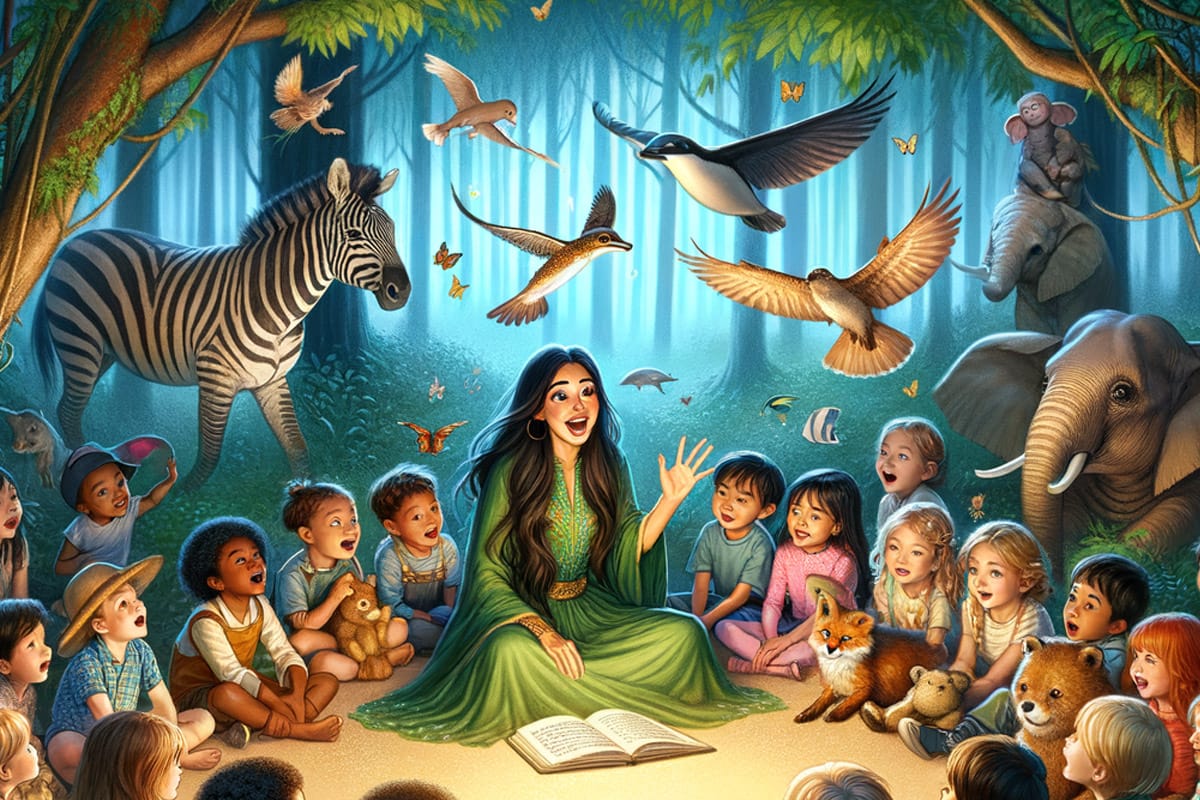The Wild Tales We Tell: Introducing Children to Wildlife Conservation Through Enchanting Stories
Discover how enchanting children's stories are a powerful tool for wildlife conservation education, sparking curiosity and compassion in young minds toward protecting our planet's precious animals.

In the heart of every child is the seed of a story, waiting to sprout into a lifelong love affair with the more-than-human world. Stories carry the magical ability to transcend boundaries, ignite imagination, and instill values.
When these tales are woven with messages of wildlife conservation, they can cultivate an early appreciation for nature in children and encourage stewardship for the world that sustains us all.

Become a Guardian of the Wild: Your Premium Membership Awaits
Join a growing tribe of parents, educators, and nature enthusiasts who believe in the transformational power of a story well told. Together, we can inspire the next generation to make a lasting impact on our planet's future.
Become a Member!The Role of Children's Stories in Wildlife Conservation Education:
Children's stories have long served as vessels for important life lessons. Classic fables with animals as protagonists subtly teach morals, while contemporary tales often address issues such as friendship, diversity, and courage. Integrating wildlife conservation into these narratives is both a natural and effective progression.
Narratives that feature wildlife and natural settings can introduce young minds to the concept of conservation in an accessible and engaging way.
Through the adventures of animal characters and the challenges they face, children learn about the value of biodiversity and the importance of protecting the environment.
Crafting Enchanting Narratives for Greater Awareness:
Stories with vibrant ecosystems can act as a child’s first window into the complexity of natural habitats. To cultivate a deeper connection with these environments, tales can explore the intricate relationships between animals and their surroundings. Such stories not only entertain but also educate children about different species, why their survival matters, and how human actions affect their well-being.
An enchanting story often contains elements of wonder and empathy — keys that unlock a child’s innate capacity to care. When children empathize with a character, they're more likely to be moved by their struggles, whether it’s a polar bear dealing with shrinking ice caps or a rainforest bird losing its home to deforestation.
Incorporating Wildlife Conservation Into Storytelling:
When developing children’s stories with conservation themes, it’s important to strike a balance between education and narrative enjoyment. Here are some ways to do this:
- Create Relatable Characters:
Characters should be crafted in a way that children can relate to them, whether they're thundering elephants or tiny tree frogs. By giving animals distinct personalities and voices, children learn to recognize them as beings worth caring for. - Introduce Real-World Challenges:
Addressing real challenges that animals face, such as habitat loss or pollution, raises awareness and fosters a sense of responsibility. But it's crucial to present these issues in a manner that is age-appropriate and hopeful to not overwhelm young readers. - Showcase the Beauty of Biodiversity:
Highlighting the beauty and uniqueness of different species and ecosystems can inspire wonder and a desire to protect the natural world. Vivid descriptions and illustrations can bring these aspects to life within the pages. - End with Actionable Solutions:
Concluding stories with actionable steps children can take empowers them to feel part of the solution. This could be as simple as creating a wildlife-friendly garden or learning more about local conservation efforts.
Case Studies: Literature that Leaves an Impact:
Certain books have already made significant inroads into bringing the message of wildlife conservation to young minds. "The Lorax" by Dr. Seuss remains a timeless tale advocating for the environment. "The Great Kapok Tree" by Lynne Cherry directly addresses the impact of deforestation, leaving readers with a poignant call to action.
Final Thoughts: Engaging Hearts and Minds for Conservation:
Storytelling is a potent tool for conveying the value of wildlife conservation to the next generation. When children learn through stories that resonate with them, the message sticks. It becomes part of their inner narrative, one that lays the groundwork for their attitudes and actions as adults.
Encourage the children in your life to embark on a literary journey where they can adventure with talking animals, explore lush rainforests, or dive into the deep blue sea, all while gaining a heart for conservation.
Explore our collection of wildlife conservation-themed children's stories today and foster a love for nature that will nurture the environmental stewards of tomorrow.
Discover stories that educate, enchant, and empower.
Visit our collection and help your child take the first step in the wild journey of wildlife conservation.
Checkout our Book's